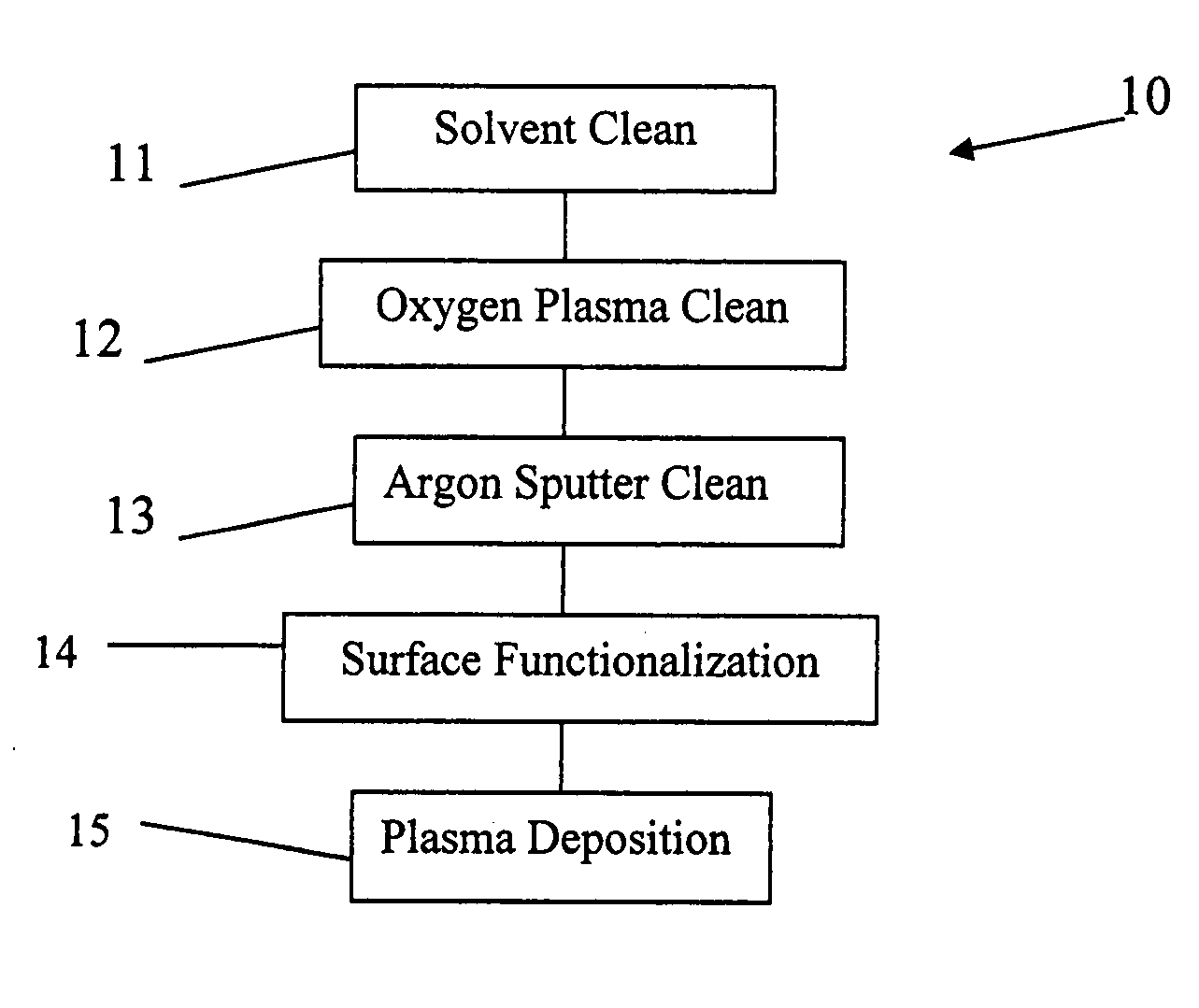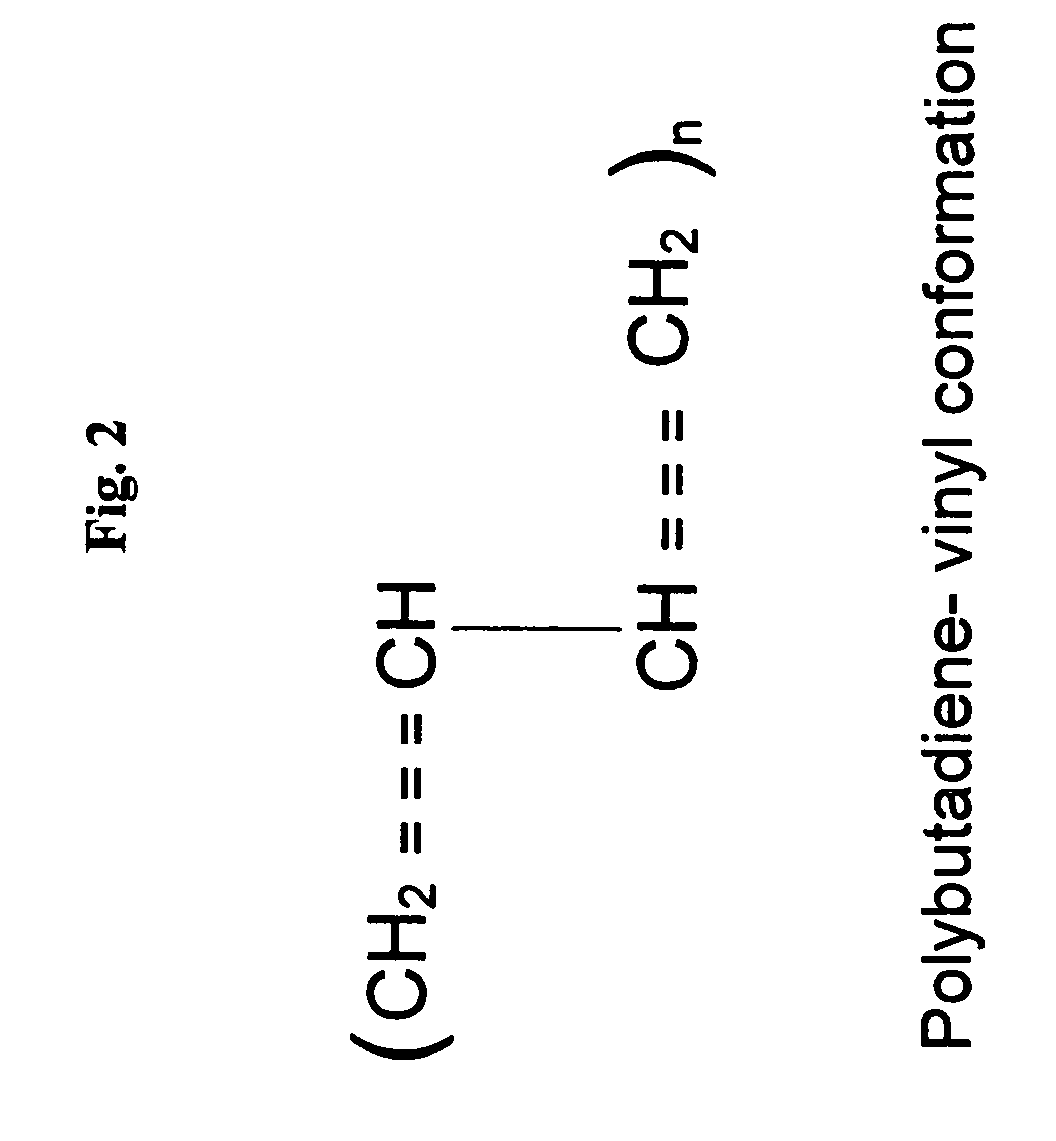Method of forming a polymer layer on a metal surface
a metal surface and polymer technology, applied in the direction of pretreatment surfaces, coatings, plasma techniques, etc., can solve the problems of metal surface coatings that are excessively thick, can crack under stress, and have relatively low adhesion and elasticity, so as to reduce the occurrence of stress risers and increase the mechanical strength of the polymer film
- Summary
- Abstract
- Description
- Claims
- Application Information
AI Technical Summary
Benefits of technology
Problems solved by technology
Method used
Image
Examples
Embodiment Construction
[0024] A stainless steel wire was washed successively for 3 minutes with methylene chloride, isopropanol, and deionized water, and then air dried (step 11). The wire was then cleaned with plasma oxygen to remove remaining contaminants, using inductive plasma at 200 W, 50 mTorr, 20 sccm (standard cubic centimeters) O.sub.2, 30 seconds (step 12). The wire was then argon sputter cleaned to remove loosely adherent oxidized metal and thus promote bonding of the tie layer to the native metal. Capacitive plasma was used with the lower chuck bias electrode at 60 W, 100 mTorr, 20 sccm argon, 60 seconds (step 13). Chemically reactive intermediates were then bonded to the wire to create a direct chemical binding between the metal and polymer tie coating followed by an argon quench: inductive plasma at 200 W, 50 mTorr, 20 sccm O.sub.2, 3 minutes; and a 10 minute argon quench to cool the parts (step 14). A plasma deposition of a butadiene polymer tie layer was then performed. Argon was first rem...
PUM
 Login to View More
Login to View More Abstract
Description
Claims
Application Information
 Login to View More
Login to View More - R&D
- Intellectual Property
- Life Sciences
- Materials
- Tech Scout
- Unparalleled Data Quality
- Higher Quality Content
- 60% Fewer Hallucinations
Browse by: Latest US Patents, China's latest patents, Technical Efficacy Thesaurus, Application Domain, Technology Topic, Popular Technical Reports.
© 2025 PatSnap. All rights reserved.Legal|Privacy policy|Modern Slavery Act Transparency Statement|Sitemap|About US| Contact US: help@patsnap.com



